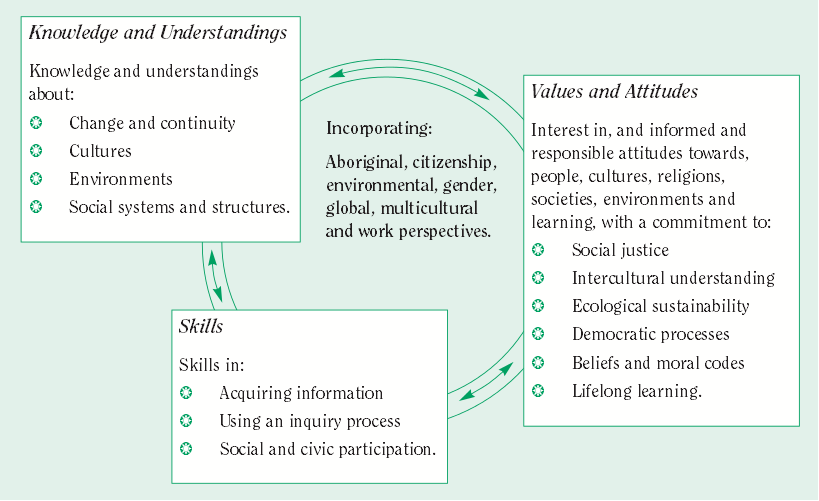This cycle found in the HSIE syllabus (NSW Board of Studies, 2006), demonstrates the cyclical processes of the teaching of HSIE. The development of knowledge and understanding is driven by the content under each of the four strands of the syllabus. During the direct teaching of this content, values and attitudes are demonstrated and embedded within students through knowledge and understanding of action and reaction and the presentation of a wide variety of perspectives, views and opinions. This in turn encourages students to develop their own values and attitudes through responsible, educated decisions. Through the learning of content and creation of individual values and attitudes, students develop life skills, in particular how to use an inquiry process. These three aspects of the HSIE process of learning all incorporate a variety of perspectives, which as mentioned earlier, I believe as a teacher is critical in providing students the opportunity to question, discover and develop educated opinions based on their individual beliefs, morals and understandings.This relates directly back to the purpose of HSIE in providing students with an understanding of society and the environment so that they may apply their knowledge, skills and attitudes to participate as responsible citizens to improve the quality of society and the environment.
Additional processes within HSIE include:
Additional processes within HSIE include:
- the use and interpretation of primary and secondary sources
- the use of geographic tools, particularly for the development of skills
- a variety of text types, especially persuasive and informative texts
- use a variety of contexts in which to apply and understand content
- group and community activities to develop empathy, a value of multiculturalism, social skills and encourage active civic participation

 RSS Feed
RSS Feed